The New Year is here! Starting another journey around the sun offers the perfect opportunity to set goals and achieve new accomplishments for the 365 days ahead. Essentially, it’s a blank slate! Whether you’re looking to make more time for yourself, travel, or hang out more frequently with loved ones, this is your chance to outline the little changes you want to make the year even better. One great way to start out 2023 with a bang is to focus on how to improve indoor air quality in your home.
Sure, exercising, eating a balanced diet, drinking water, and getting plenty of sleep are absolutely important for our health, but so is the air we breathe! Even if it doesn’t often get considered in the wellness equation.
When the average person breathes 20,000 breaths per day and spends 90% of their time indoors, what’s in our air matters. If it’s filled with all sorts of microscopic contaminants like mold spores, mycotoxins, and bacteria, that can cause some serious negative effects on our bodies.
Because our homes are one of the main spaces we spend the most time, they’re at the top of the list of areas we can work on to make healthier. Between sleeping, watching our favorite TV shows, eating dinner with the family, and recharging on weekends, we consume a ton of air in these spaces.
So! How do you improve indoor air quality in your home? Here are 7 resolutions that you can add to your list and make 2023 the healthiest year yet for you and your family.
Top 7 Resolutions to Improve Indoor Air Quality in Your Home in 2023
1. Test Your Dust
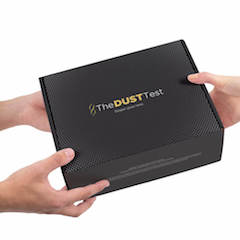
Gravity brings particles like mold spores, mycotoxins, and endotoxins down to horizontal surfaces like floors, door frames, and furniture. So basically, where dust collects, so too do these indoor contaminants.
Testing this dust will help to determine exactly what’s hanging out in your home and potentially causing problems. Highly contaminated dust is not only a health hazard, as all of those particles can enter the body when they’re kicked up into the air when the dust is disturbed. It also indicates that there’s an underlying contamination problem somewhere in the home.
The Dust Test is the first stop on your journey to help improve indoor air quality in your home. It will help you know if there’s a problem before spending thousands of dollars trying to find one (both medically and in your home). And, if there is a problem, The Dust Test will indicate what you’re being exposed to before your inspector comes so that you can ensure they will find where it’s coming from.
This is one of the best ways to ensure your home is a safe environment in 2023.
2. Schedule HVAC Service Appointments

The HVAC is essentially the lungs of a home. As such, it’s important to ensure that it’s operating properly and not bogged down with issues like microbial growth. When the system flips from cool air to warm air, condensation can build up within the ducts or the unit itself, which offers the perfect home for things like mold.
If a lucky spore lands in this moisture, it will begin to colonize the space, leaving you with hidden mold growth within the home. This growth will continue to thrive undisturbed until those warmer or cooler months occur. When you flip the thermostat to the alternate setting (heat or cold), all of those moldy particles will be blown throughout your home. These particles will decrease your indoor air quality, contaminate the surfaces inside, and increase the chance of another contamination situation developing.
The change in temperature can also lead to mold growth on other parts of the unit, such as the condensation coil and drip pan.
Routinely scheduling a professional to come in and service the HVAC in the spring and fall, before the warmer or cooler weather settles in, can help avoid this contaminant catastrophe. This individual should test for microbial contamination while assessing the unit so that if there’s a problem, it can be resolved before turning on the unit and blowing it throughout the home. They should also clean the coil, make sure the blower, furnace, and cabinets are clean, and ensure that everything is operating correctly. Think of it as a biannual tune-up and cleanup.
A clean and healthy HVAC system helps maintain a clean and healthy home.
3. Set Up a Cleaning Schedule
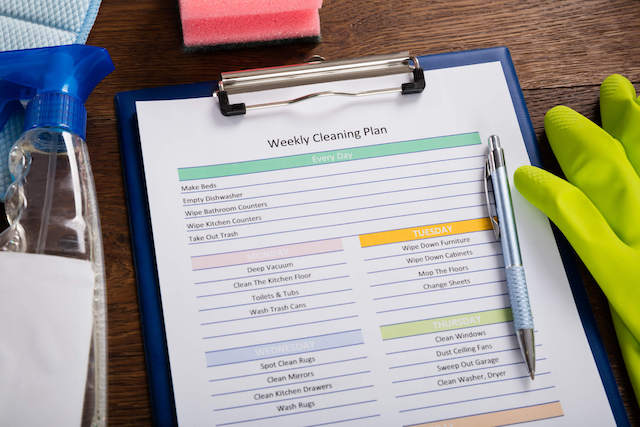
We can’t exactly put a bubble around our homes, so particles like mold spores and mycotoxins will inevitably blow inside. It’s up to us to actively work to keep particle levels low in our homes. Deep cleaning regularly (including appliances) helps remove particles like spores, bacteria, and toxins, improving air quality and decreasing the likelihood of microbial growth.
Building the right cleaning product arsenal is a key piece of the puzzle. A HEPA vacuum cleaner, botanical cleaning products, and microfiber towels should be included to ensure particles are actually being eliminated.
Make sure to prioritize dusting as well. Microscopic particles settle where dust settles. Dusting can help reduce the number of particles that get kicked up into the air that proper air filtration must deal with. Make sure to use microfiber cloths during this cleaning process, as they are 100 times better at wiping away small particles than regular rags.
While cleaning, it’s inevitable that microscopic particles like mold spores and toxins will get kicked up into the air. To remove these and make sure they don’t settle right back down on the surface, turn on those air purifiers to remove anything floating around in the air. Not all air purifiers are made the same, though, so make sure yours can filter out these small particles instead of just sending them right back into the room.
For more information on cleaning product recommendations, check out this blog post.
4. Maintain Indoor Humidity Levels Between 35-50%

This level is the sweet spot for promoting home health.
Some species of mold can begin to grow in areas with high humidity. This moisture-rich air can cause condensation as it hits warm surfaces, creating yet another opportunity for microbial growth. Remember, all it takes is 24-48 hours on a surface with food and moisture for a spore to transition into an active colony.
Levels that are too low, on the other hand, can cause structural issues in a home, particularly with wooden surfaces. Hence, it’s important to maintain that perfect sweet spot.
A great idea is to invest in a hygrometer and continually monitor your indoor humidity levels. If it goes too far in either direction, you can then jump into action to fix it and ensure your environment remains a safe space.
If they widely fluctuate and you have no idea why, there may be a larger problem at home, such as structural issues. In this case, contact an expert to get their input on what the issue is so that it can be resolved ASAP.
Ways to keep your indoor humidity at the perfect level include:
Focusing on airflow in bathrooms while showering
Creating airflow in kitchens while cooking
Investing in a dehumidifier if necessary
Cleaning up pooled water and spills ASAP
Ensuring there’s adequate insulation
Increasing air circulation throughout the home
Using the AC on hot weather days
Fixing leaks ASAP
5. Routinely Check For Problems
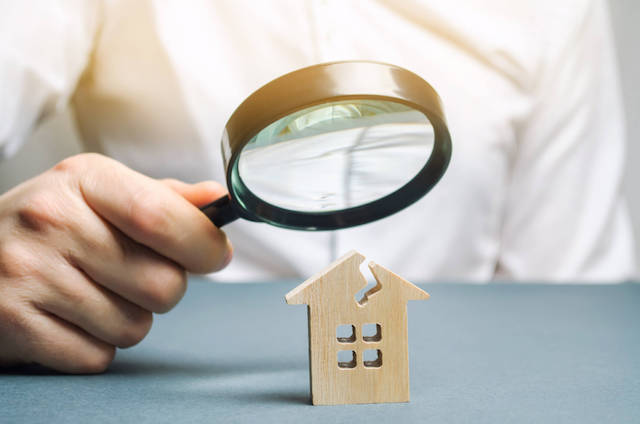
The sooner you can catch a problem, the better. This will help avoid contaminants from moving in and, if they’re already present, decrease the number of particles released that will lower your indoor air quality.
So channel your inspector gadget throughout the year and make sure that your home is in tip-top shape.
Here are things to look out for.
Microbial growth
Checking for microbial growth involves using the senses.
Visible Growth
With so many species existing in the world, mold colonies can come in a variety of colors, shapes, and textures. Some of the most common colors include green, white, grey, blue, red, black, brown, or a combination of them. As for textures, they could be fuzzy, powdery, velvety, or slimy.
If any type of unidentifiable growth pops up, it's safe to assume there’s a mold problem that needs to be addressed.
An Unidentifiable Odor
If you don’t find any visible mold, that doesn’t mean that there isn’t a problem. The growth could be in a hidden location, like underneath flooring, or be too small to be seen by the naked eye yet.
In this case, rely on your nose. Mold growth often creates a damp, musty, earthy smell due to the release of gases called microbial volatile organic compounds (MVOC). If you smell this, there’s a good chance that you’re dealing with a contamination situation.
Hotpot areas to check include:
The toilet tank (lift the lid and peek inside)
- The attic
- The basement
- Crawlspaces
- Grout and caulk
- Windowsills and doorframes
- Appliances
- Exhaust vents
- Showerheads
- Sink faucets
- Mattresses
- House plants
If you happen to find contaminants in one of these places, make sure that you handle the situation properly so that your home doesn’t become a toxic hazard zone.
Check out this blog post to guide you on how to eliminate a contamination situation. If it’s a smaller problem, like in bathroom grout or on an appliance, check out our blog for steps on how to quickly and effectively resolve the issue.
Leaks
Take a close look around the home for any moisture-related issues.
- Underneath sinks
- Inside cabinets
- Appliances
- Attic
- Basement
- Around the toilet and shower
- Hot water tanks
Bonus tip: Another great idea to determine if there’s a hidden leak is to assess your water usage and bill. If these are abnormally high, there could be an issue somewhere in your home. In that case, consider hiring an inspector to come in and assess the building. You can also set up leak detection devices to help monitor any hidden problems.
Water damage
Water damage is an open invitation for microbial growth. Mold, for example, can grow on a surface with a food and water source within 24-48 hours. Finding and resolving problems quickly can reduce the chance of a contamination situation occurring or of one going unnoticed for long periods of time. This can cause your indoor air quality to plummet.
Things to look out for include:
Wet insulation
- Rusty nails
- Discoloration on the ceiling, walls, or carpet
- Stains on wood
- Frost buildup underneath the roof
Structural issues
One of the key components to help improve your indoor air quality is preventing moisture from making its way indoors. The less moisture there is, the fewer opportunities there will be for microbial growth. Ensuring the home's exterior is prepped to act as an appropriate barrier is a huge part of this push to avoid water intrusion.
Take a close look around your home to determine if there are any cracks, gaps, or other issues that could allow moisture inside.
Places to check include:
Foundation
- Attic
- Roof
- Gutters
- Pipes
- Windowsills
- Door frames
- Siding
If you find any problems, take care of them ASAP so moisture intrusion does not occur.
6. Invest in Air Purification
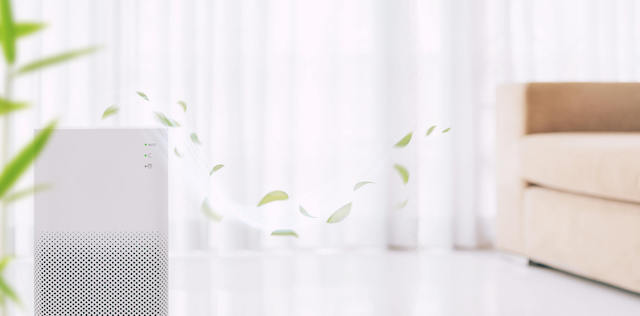
One of the best ways to improve indoor air quality in your home is by investing in technology that will actively filter out contaminants.
As noted earlier, it’s impossible to completely prevent particles from entering your home. Cleaning is a great way to remove them, but air purifiers also help to get rid of the rest of these particles and contaminants. The fewer there are, the healthier your indoor air quality will be.
Not all air purifiers are built the same, though. You want to go with a unit that removes the maximum number of contaminants possible and does it all of the time, not just some of the time. That way, they don’t recirculate back into the environment and potentially make their way into the bodies of those spending time inside. Air purifiers should at least meet HEPA status, meaning that they remove 99.97% of particles as small as 0.3 microns. If it can remove smaller particles, that’s even better. Some can also work to reduce other contaminants such as formaldehyde, VOCs, bacteria, viruses, and biotoxins. Also, pay attention to the space recommendations on the particular unit to ensure it’s equipped to filter the air for the size of the home.
Opting for a whole-home air purification system that can eliminate the smallest contaminants possible is the best option to help improve indoor air quality in your home. Some purification systems go beyond HEPA status, removing even more contaminants from the air and creating a safer indoor environment.
Our go-to air purifier recommendation is Intellipure products.
7. Change Those Air Filters on Time
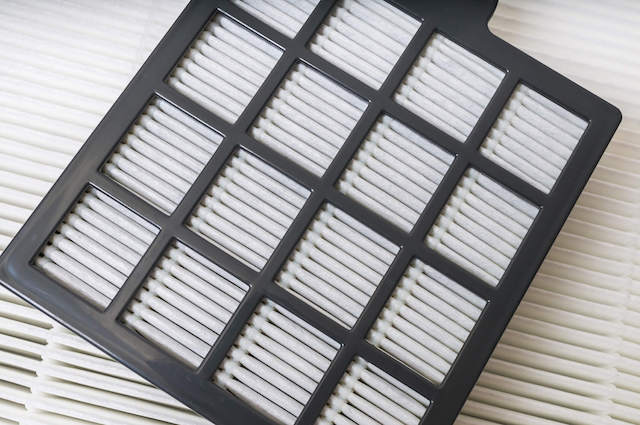
Air filters are the first line of defense both for the HVAC system and your indoor air. These barriers help eliminate contaminants so that they don’t continue to circulate throughout the indoor space. It also helps remove them before they reach the HVAC, which can help avoid microbial growth in the unit itself.
That being said, if they’re past their time to be replaced, chances are that they’re packed full of all sorts of particles. This will affect their ability to filter, leading to lower indoor air quality. It can also put strain on the HVAC system as it works overtime to pull air through the clogged filters. That scenario can lead to you spending money fixing or replacing the unit, which is definitely not something we want in 2023.
All filters are different, so check with the manufacturer’s instructions on how often to change them. Set up a reminder to replace them at this time, but also routinely look at them to see if they need to be changed ahead of schedule. If you’re not sure whether to change the filter earlier, a few signs to look out for include discoloration of the filter, odd odors, higher electricity bills, a decrease in airflow, or dust around the vents or condenser coils.
It is also a good idea to switch to the highest-rated MERV filters possible for the specific HVAC system. The details on what can be used can be found in the HVAC manual. The key thing to keep in mind is that the smaller the particles these filters can eliminate, the better. When you’re dealing with microscopic particles like mold spores and mycotoxins, you want filters with the technology to actually eliminate them from the air. Otherwise, they’ll just circulate straight back into the home.
Improve Indoor Air Quality in Your Home to Improve Your Health

Working to create a safer and healthier home is the best way to invest in your and your family’s wellness. Just because we can’t see exactly what we’re breathing in doesn’t mean it’s not impacting our bodies. Keeping our air as contaminant-free as possible will help lessen the toxic burden our bodies have to deal with.
The goals above can help you make 2023 the year of home health. Don’t feel like you have to completely jump in with both feet, though! It’s easy to become overwhelmed while trying to create a game plan to create a safe indoor environment. The key thing to remember is that any step towards improving your home is a step in the right direction.
Happy New Year!
Still Have Questions?
A member of our team is here to help! Click on “Get Started ➤” below to book a consultation with a member of the HOMECLEANSE team. We have a few quick questions that will help us put together a roadmap to solve or prevent all of your mold problems.
Two minutes of your time could lead to better health for you and your family.
Must-Have Indoor Air Quality Tools
-

EC3 Laundry Additive
Add EC3 to every rinse cycle to rinse away mold, bacteria and musty odors from...
-
$23.00 SHOP NOW -
Sale

Intellipure Compact Air Purifier
Buy one Compact, get one free. Simply add one to your cart, and a second...
-
Original price was: $299.00.$199.00Current price is: $199.00. SHOP NOW -

Intellipure SuperV Whole House Air Purifier
Turn your HVAC into a filtration system, removing 99% of ultrafine particles including airborne mold,...
-
$2,000.00 – $2,995.00 SHOP NOW -

HomeCleanse Cleaning
Take your cleaning to the next level buying all the tools we use to keep...
-
$299.00 – $549.00 SHOP NOW -

Mold & Bacteria Contents Cleaning
Remove harmful pollutants that accumulate in the dust of your home. (Options available for renters...
-
$99.00 – $349.00 SHOP NOW -

EC3 Mold Solution Concentrate
Micro Balance EC3 Mold Solution Concentrate is a natural botanical that removes mold spores, bacteria,...
-
$33.00 SHOP NOW -
Sale

Industry-Leading Intellipure Ultrafine 468
The Intellipure® Ultrafine 468 features our proprietary DFS technology, which traps and eliminates potentially harmful...
-
Original price was: $999.00.$499.00Current price is: $499.00. SHOP NOW -

The Dust Test
The Dust Test is a comprehensive at-home test that helps you identify mold and toxins...
-
$274.00 SHOP NOW -
Sale

EuroClean 4 Gallon Hepa Vacuum
The Euroclean GD930HSP is a 4 Gallon Dry HEPA Vacuum that meets the EPA's standards...
-
Original price was: $849.00.$619.00Current price is: $619.00. SHOP NOW -

AprilAire E080 Professional Dehumidifier Bundle
Includes all the dehumidifier accessories you will need. Our Aprilaire E080 comes with a drain...
-
$1,499.99 SHOP NOW
